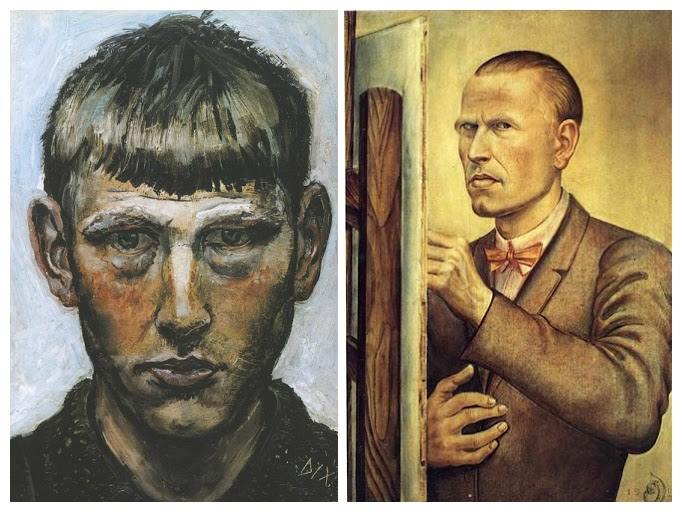One of the most brutal satirists of modern painting: who is Otto Dix?
He was targeted by the Nazis for the depravity of his art. In 1939, Dix was arrested for conspiring to kill Hitler, but the charges were dropped. He was captured by the French at the end of the war and held prisoner until 1946.

Wilhelm Heinrich Otto Dix was born on December 2, 1891, in Germany. His father was an ironworker and his mother was a tailor. He received a love of music and poetry from his mother, who was a tailor. He showed his artistic talent for the first time, especially in drawing, in primary school. He decided to become a painter at the age of ten when he modeled for the painter Fritz Amann. While he was studying art, he worked as an apprentice decorator for four years. In 1909, Dix began working at the Dresden Academy of Fine Arts. Dix is actually a self-taught painter. He tried to sculpt under the guidance of Richard Guhr. A bust of Friedrich Nietzsche he created was bought for the Dresden State Museum but was later destroyed by the Nazis. He was also influenced by the Expressionists, Post-Impressionists, and especially the Vincent van Gogh exhibition he saw in 1913. Drawing mainly portraits and landscapes, Dix made his first prints in 1913.
Wilhelm Heinrich Otto Dix (2 December 1891 – 25 July 1969) was a German painter and printmaker, noted for his ruthless and harshly realistic depictions of German society during the Weimar Republic and the brutality of war. Along with George Grosz and Max Beckmann, he is widely considered one of the most important artists of the Neue Sachlichkeit.
When the First World War began, Dix volunteered for military service. He was injured several times and reflected on many of the tragic scenes he witnessed in his works. After the war, Dix continued his art education at the Dresden Academy of Arts (1919-22) with Max Feldbauer and Otto Gussman. During the war years, he turned to Futurism and Cubism. He began to integrate Dadaist and Expressionist elements into his work. After 1920, he reflected on the subjects of sexual violence, murder, and persecution in his works. The Card-War War Cripples painting (1920) is an example of these strange but poignant images.
In 1921 he participated in exhibitions in Berlin and Dresden before moving to Düsseldorf in 1922. In 1923, Dix married Martha Koch and they had three children. During the 1920s, Dix participated in the most important new art exhibitions in Germany. Most importantly, the 1925 exhibition at the Kunsthalle Mannheim was included in the New Objectivity, which gave its name to the movement with which Dix will forever be associated. The New Objectivity evolved from Expressionism.
In 1931, Dix was appointed to the Prussian Academy of Arts in Berlin. In the same year, he worked in exhibitions all over Germany and at the Museum of Modern Art in New York. This fame, however, led to him being targeted by the Nazis for the immorality of his art. His exhibitions were banned in Germany. He went to Switzerland several times in the mid-1930s and participated in several exhibitions there. In 1939, Dix was arrested for conspiring to kill Hitler, but the charges were dropped. He was captured by the French at the end of the war and held prisoner until 1946. After returning to Germany, Dix continued to make lithographs and show more of his wartime experiences in his works.
Much of Dix's later work focuses on post-war suffering, religious allegories, and biblical scenes. He traveled a lot during the 1950s and 60s. He was appointed a member of several art academies in Florence, Berlin, and Dresden. After traveling to Greece in 1967, his left hand was paralyzed. He passed away in 1969. Dix is best known for his works describing the famous collapse of German history. It also strongly influenced portrait painters throughout the 20th century.
The portrait of journalist Sylvia Von Harden is one of his important works. Although different stages were seen in Dix's art life, his expressionist feature was more dominant.
